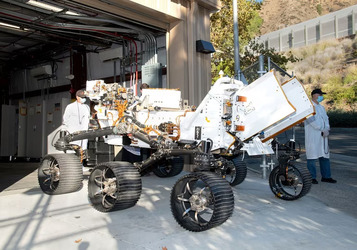The week's pick
Random Articles
Reseach Article
Crosstalk Noise Modeling analysis for RC Interconnect in Deep Sub-Micron VLSI Circuit
| Communications on Applied Electronics |
| Foundation of Computer Science (FCS), NY, USA |
| Volume 7 - Number 4 |
| Year of Publication: 2017 |
| Authors: Md Shahriar Uzzal, Md Khalid Hossen, Abid Ahmad |
 10.5120/cae2017652647
10.5120/cae2017652647
|
Md Shahriar Uzzal, Md Khalid Hossen, Abid Ahmad . Crosstalk Noise Modeling analysis for RC Interconnect in Deep Sub-Micron VLSI Circuit. Communications on Applied Electronics. 7, 4 ( Jul 2017), 33-38. DOI=10.5120/cae2017652647
Abstract
This thesis presents an approach to solve the VLSI (very large scale integration) layer assignment problems that will lead to the minimization of crosstalk noise. Using 2π model a closed form crosstalk noise modeling for on-chip VLSI RC interconnects is presented in this thesis. The interconnection can be modeled as distributed RC segments with sufficient accuracy for the low frequency of operation. When step input and saturated ramp input is applied to the aggressor which is adjacent to the victim net then this crosstalk noise modeling is perpetrated. In this thesis, the working model represents the noise voltage waveform. This thesis is worked to find out noise pulse width and noise amplitude for RC interconnection. In this thesis, the original 2π model is further simplified and it has simply closed form expressions, which is capable of measuring noise pulse width and noise amplitude for RC interconnect. The closed form expressions of a 2π model are simulated using Matlab. This model considers various parameters, such as coupling location (near the driver and near receiver) and course distributed RC characteristics for victim net.
References
- A. Devgan, “Efficient Coupled Noise Estimation For On-Chip Interconnects,” In Proc. Intl. Conf. on Computer Aided Design, pp. 147–153,1997.
- P. HeydariandM.Pedram, “Analysis And Reduction Of Capacitive Coupling Noise inHigh-Speed VLSI Circuits,” IEEE Intl. Conf. on Computer Design (ICCD), pp. 104-109, 2001.
- A. Vittal, L. Chen, M. Marek‐Sadowska, K. -P. Wang and S. Yang, “Crosstalk In VLSI Interconnections,” IEEE Trans. on Computer‐Aided Design Of Integrated Circuits andSystem, vol. 18, pp. 1817-1624, 1999
- V. Maheshwari, S. Lavania, D. Sengupta, R. Kar, D. MandalandA.K. Bhattacharjee, “An Explicit Crosstalk Aware Delay ModellingforOn-Chip VLSI RLC Interconnect with Skin Effect”, Electron Devices, vol. 10, pp. 499-505, 2011.
- Ye, Y., S. Borkar and V. De, 1998. A new technique for standby leakage reduction in high performance circuits. In Proceedings of the IEEE Symposium on VLSI Circuits, June 1998, pp: 40- 41.
- Tsai, Y.-F., D. Duarte, N. Vijaykrishnan and M.J. Irwin, 2003. Implications of technology Scaling on leakage reduction techniques. In Proceedings of Design Automation Conference (DAC2003), 2-6: 187-190
- S. Mutoh et al., “1-V Power Supply High-speed Digital Circuit Technology with MultithresholdVoltage CMOS,”IEEE Journal of Solis-State Circuits, Vol. 30, No. 8, pp. 847-854,August1995.
- S. Thompson, P. Packan, and M. Bohr. MOS Scaling: Transistor Challenges for the 21st Century. In Intel Technology Journal, 3rd Quarter, 1998.
- A. Chandrakasan, I. Yang, C. Vieri, and D. Antoniadis. Design Considerations and tools for LowVoltage digital system design. In Proceedings of the 33rd ACM/IEEE Design Automation Conference, 1996, pp. 728-733.
- C. Hu. Device and Technology Impact on Low Power Electronics. In Low Power Design Methodologies, Kluwer Academic, Boston, pp. 21-36, 1996.
- J. Rabaey. Digital Integrated Circuits: A Design Perspective. Addison-Wesley, Reading, MA, 1993. [12] M.C. Johnson, K. Roy, and, D. Somashekhar. Amodel for leakage control by transistor stacking. Master’s Thesis, Department of ECE, Purdue University, 1997.
- R.X. Gu, and M.I. Elmasry. Power dissipation analysis and optimization of deep submicron circuits. IEEE Journal of Solid-State Circuits, vol. 31, no. 5, May, 1996, pp. 707-713.
- Z. Chen, M. Johnson, L. Wei, and K. Roy. Estimation of Standby leakage power in CMOS circuits. In International Symposium on Low Power Electronics and Design, Monterrey, CA, August, 1998.
- Low Power Group. Electrical and Computer EngineeringDepartment CarnegieMellon University. http://www.ece.cmu.edu/lowpower/benchmarks.html
- Kanika kaur ,Arti Noor. STRATEGIES & METHODOLOGIES FOR LOW POWER VLSI DESIGNS: A REVIEW, International Journal of advance Engineering and Technology, Vol 1, issue2,May2011,pp 159-165. [17] Kanika kaur, Arti Noor. POWER ESTIMATION ANALYSIS FOR CMOS CELL STRUCTURES, International Journal of advance Engineering and Technology, Vol 3, issue2, May2012,pp 293-301.
Index Terms
Keywords

